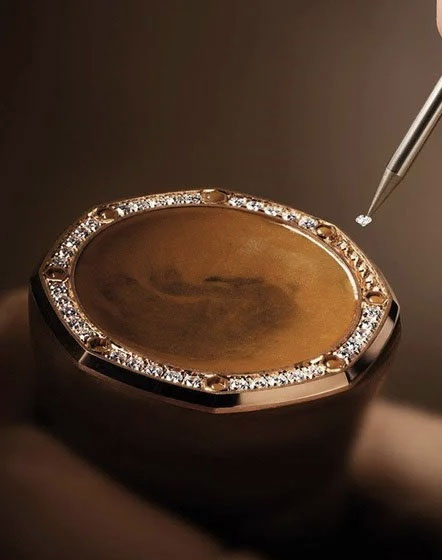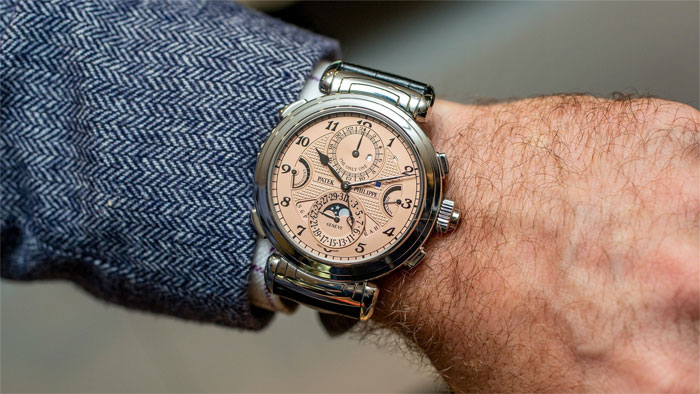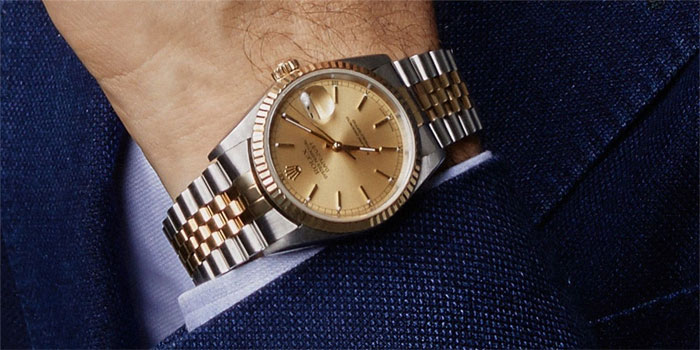When investing in an expensive watch, we are not just paying for the brand’s prestige but also for the millions of hours of craftsmanship that go into launching that product, according to Highsnobiety.
Some watch models even have prices higher than supercars. At the same time, these luxurious accessories are gradually becoming an essential part of the wardrobes of successful individuals and the elite.
GQ reported in 2019 that the Grandmaster Chime Ref 6300 A by Patek Philippe became the most expensive watch ever sold. At an auction in Geneva, Switzerland, the piece fetched a price of $31 million. The previous record was held by the Rolex Daytona, which sold for $17.7 million at a Phillips auction in 2017.
Brand Engagement with Customers
Brands like Rolex, Patek Philippe, Audemars Piguet, not only create exceptional timepieces but are also savvy marketers.
When asked what luxury looks like, watch enthusiasts immediately think of Rolex. The brand exudes prestige, timelessness, and distinctive quality. This product is also favored by many famous artists, athletes, and businesspeople worldwide.
Similarly, Patek Philippe strives to convince customers that their watches are not just ordinary products. They are part of a personal legacy that can be passed down through generations.
The majority of messages conveyed to customers come through advertising campaigns. In the age of social media, major players in the watch industry are willing to invest in imagery and content posted on their personal pages to reach a diverse customer base.

Watches become more expensive when handcrafted. (Photo: LuxWatch4You).
In addition, many brands attract attention through collaborations with celebrities and major events. In July, Omega’s watch accompanied billionaire Jeff Bezos to the edge of space.
During EURO 2020, coach Gareth Southgate wore a rare Hublot watch. As a partner of the tournament, the brand launched a timepiece designed to track all tournament activities, produced in a limited edition of 1,000 pieces worldwide.
Attention to Detail and Investment in Materials
Nowadays, many brands are moving towards mass production methods. However, prestigious watch brands still rely on the hands of artisans to create their products. Typically, each craftsman must undergo about 10 years of training to achieve proficiency.
The Blancpain 1735 Grande Complication has 740 handcrafted components. Meanwhile, the German brand A. Lange & Söhne employs 70 staff in its finishing department, responsible for processes such as chamfering, grain cutting, and polishing. These brands control precision down to the finest details, all aimed at meticulousness.
Depending on the materials used, each timepiece will have a different price. Factors such as gold-plated watches and crystal-dial cases contribute to price variations.
Moreover, creating movements and specialized dials requires companies to invest years in research and development.

Patek Philippe watches resemble works of art. (Photo: Hodinkee).
The brand is not the only factor determining the price of a watch. The time taken to produce, and the quality of materials are even more important factors. Mechanical watches are made with meticulous attention to detail. In some cases, the watches are hand-finished, with components of the highest quality that must meet very strict production standards.
Rolex is a brand that spares no expense on materials. The brand tends to use 904L steel, which is different from what many other manufacturers use. This material makes the watch harder and shinier, while also increasing its cost.
Previously, the brand used 316L stainless steel like many others. However, aiming for a new product advancement, the brand is willing to invest and change materials.
To compete, brands are not hesitant to invest and create distinctive features. In a comparison of Rolex and Patek Philippe products, SCMP pointed out six differences between the two major brands. Among them, the most notable is the difference in how they showcase their movements.
Rolex’s movement is not visible. On the other hand, the brand prioritizes creating reliable movements.
In contrast, Patek Philippe uses a sapphire case back so that buyers can admire the inner workings. The brand turns the movement into a true work of art.
It’s Not Easy to Buy a Watch
Rolex produces one million handcrafted watches each year. However, it can be very difficult to purchase one if you do not establish a relationship with an authorized distributor, according to Business Insider.
Customers face challenges when trying to buy watches. Meanwhile, prices for models have increased compared to last year. This is seen as a strategy by the brand.

Rolex as a symbol of luxury. (Photo: The Luxor Guy).
Sharing with Insider, Adam Golden from Menta Watches stated: “It seems that Rolex is adjusting its business operations to help them control distribution and categorize customers. The brand dominates authorized retail partners. This is the crucial link that determines whether customers can own a watch.”
During a visit to a store in Florida, Adam Golden noted that only one model was available for purchase due to a customer order that had been canceled.
Adam Golden is not the only one to notice the scarcity of watches. Real estate investor Tyron McDaniel shared on his personal page that he could not find a men’s Rolex and that many stores would not be receiving new designs for over a year.
“Rolex wants to show everyone the shortage and high demand to the point that they cannot produce fast enough to meet it. However, I see that the brand is releasing in a controlled manner to keep customer demand high.”, Adam Golden said.
However, the difficulty in purchasing new watches has led to an increase in the prices of vintage designs. The Daytona design, for instance, has a retail price on the brand’s website of $13,150. However, customers must pay $36,000 for a similar piece when buying through Chrono24.


















































